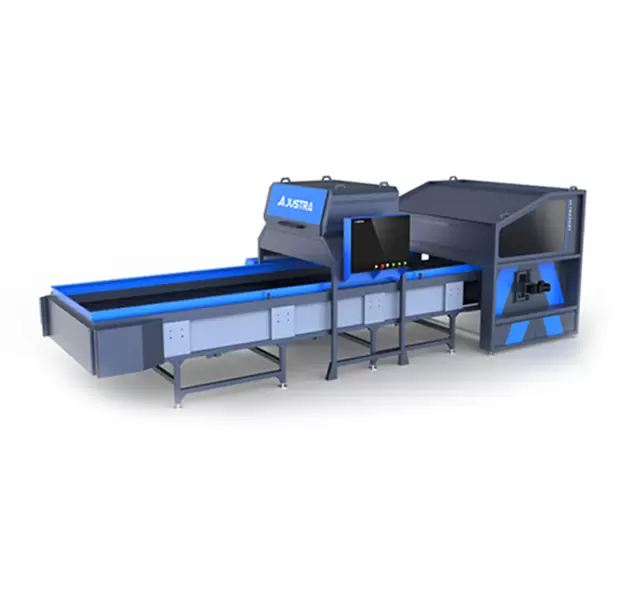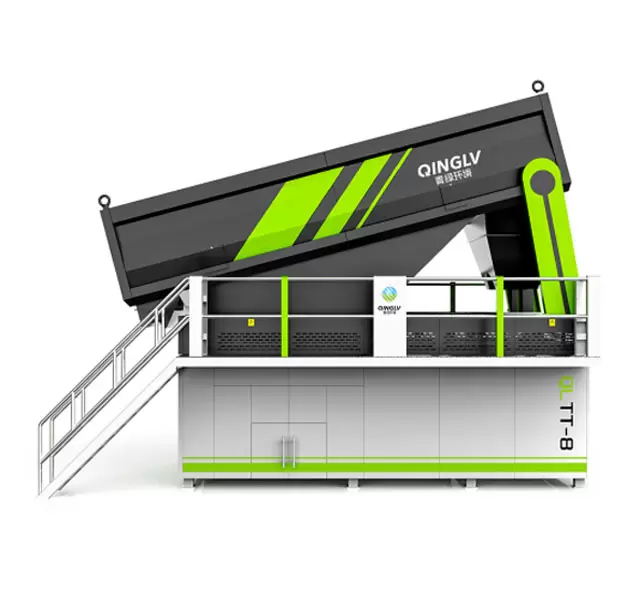 Time:2025-04-09
Time:2025-04-09
 Source:
Source:
At a time when environmental sustainability is more important than ever, the need for efficient waste management systems has become critical. Traditional methods of waste sorting are often labor-intensive, inefficient, and prone to human error. However, advances in technology are paving the way for smart waste sorting devices that could transform the way we manage waste. This blog explores how these innovations are changing waste management, the technology behind them, and their impact on the environment.
Understanding Smart Waste Sorting Equipment
Smart waste sorting equipment refers to automated systems designed to identify, separate, and process various types of waste materials. These systems utilize advanced technologies such as artificial intelligence (AI), machine learning, robotics, and sensor technology to enhance the efficiency and accuracy of waste sorting processes.
The Need for Smart Waste Sorting
The global waste crisis is escalating, with millions of tons of waste generated daily. According to the World Bank, global waste generation is expected to increase by 70% by 2050 if no action is taken. This surge in waste production necessitates innovative solutions to manage and recycle materials effectively. Smart waste sorting equipment addresses this challenge by automating the sorting process, reducing contamination rates, and increasing recycling efficiency.

How Smart Waste Sorting Equipment Works
Smart waste sorting systems typically consist of several key components that work together to streamline the sorting process:
1. Sensors and Cameras
Advanced sensors and cameras are integral to smart waste sorting equipment. These devices can identify different materials based on their physical and chemical properties. For instance, infrared sensors can detect plastics, while cameras equipped with image recognition software can classify items based on their shape and color.
2. Artificial Intelligence and Machine Learning
AI and machine learning algorithms play a crucial role in improving the accuracy of waste sorting. By analyzing data from sensors and cameras, these algorithms can learn to recognize various waste types and adapt to new materials over time. This capability allows smart sorting systems to become more efficient as they process more waste.
3. Robotic Arms
Many smart waste sorting systems incorporate robotic arms that can physically separate waste materials. These robotic systems can quickly and accurately pick and place items into designated bins, reducing the need for human intervention and minimizing the risk of injury.
4. Automated Conveyor Systems
Automated conveyor belts transport waste materials through the sorting process. These systems are designed to work in conjunction with sensors and robotic arms, ensuring a seamless flow of materials from one stage of sorting to another.
Benefits of Smart Waste Sorting Equipment
The implementation of smart waste sorting equipment offers numerous benefits that contribute to more effective waste management:
1. Increased Efficiency
Automated sorting systems can process waste much faster than manual sorting methods. This increased efficiency allows waste management facilities to handle larger volumes of waste, reducing the backlog and improving overall operational efficiency.
2. Higher Recycling Rates
Smart waste sorting equipment significantly improves recycling rates by accurately identifying and separating recyclable materials. This precision reduces contamination, ensuring that more materials are diverted from landfills and sent for recycling.
3. Cost Savings
While the initial investment in smart waste sorting equipment may be substantial, the long-term cost savings can be significant. By reducing labor costs, increasing recycling rates, and minimizing landfill fees, organizations can achieve a favorable return on investment.
4. Enhanced Safety
Automated systems reduce the need for human workers to handle hazardous materials, thereby improving workplace safety. This reduction in manual labor also decreases the risk of injuries associated with traditional waste sorting methods.
5. Data Collection and Analysis
Smart waste sorting equipment can collect valuable data on waste composition and generation patterns. This information can be used to inform waste management strategies, optimize recycling programs, and promote more sustainable practices.

Types of Smart Waste Sorting Equipment
1. Smart Recycling Bins
These bins are designed for use in homes, offices, or public spaces. They automatically sort waste into recyclables and non-recyclables using built-in cameras and sensors. Some even offer user feedback via smartphone apps, encouraging better waste habits.
2. Automated Material Recovery Facilities (MRFs)
In large-scale recycling centers, smart systems process high volumes of waste. Conveyor belts, AI-driven sorters, and robotic arms work in tandem to separate materials with high precision. These facilities often achieve higher recovery rates than traditional methods.
3. Smart Organic Waste Separators
These machines are used to isolate organic waste for composting or biogas production. By accurately removing contaminants, they ensure that the organic stream is clean and suitable for processing.
4. AI-Powered Optical Sorters
These are used to distinguish between different types of plastics, paper, or metals. They rely on AI, NIR, and color sensors to sort materials at lightning speed, reducing contamination and increasing the resale value of recycled materials.
Real-World Applications and Case Studies
Several cities and companies around the world are already benefiting from smart waste management systems:
San Francisco, USA uses AI-powered sorting facilities to maintain one of the highest recycling rates in the U.S.
Oslo, Norway implemented smart waste bins and optical sorters city-wide, reducing contamination and improving the efficiency of their waste-to-energy plants.
Shanghai, China uses facial recognition-enabled smart bins to reward residents for proper recycling, significantly increasing compliance.

Conclusion
Technology is undeniably reshaping the future of waste management. With the integration of smart waste sorting equipment, cities, companies, and households can dramatically enhance their efficiency, reduce environmental impact, and unlock new value from what was once considered garbage.
As innovation continues, the dream of a truly circular economy—where waste is minimized and resources are continuously reused—comes closer to reality.
QINGLV Environmental is a global provider of intelligent solid waste sorting solutions, focusing on turnkey technical solutions for the solid waste recycling market. Based on the independent R&D and manufacturing of intelligent solid waste sorting equipment, We are dedicated to providing low-cost, highly usable, and sustainable intelligent sorting systems to global customers. We lead the way in redefining the value and widespread application of solid waste sorting.
If you have any cooperation needs, please contact us.
E-mail: business@qinglvhj.com
Community Garbage Sorting Equipment Configuration Guide














 Prev
Prev